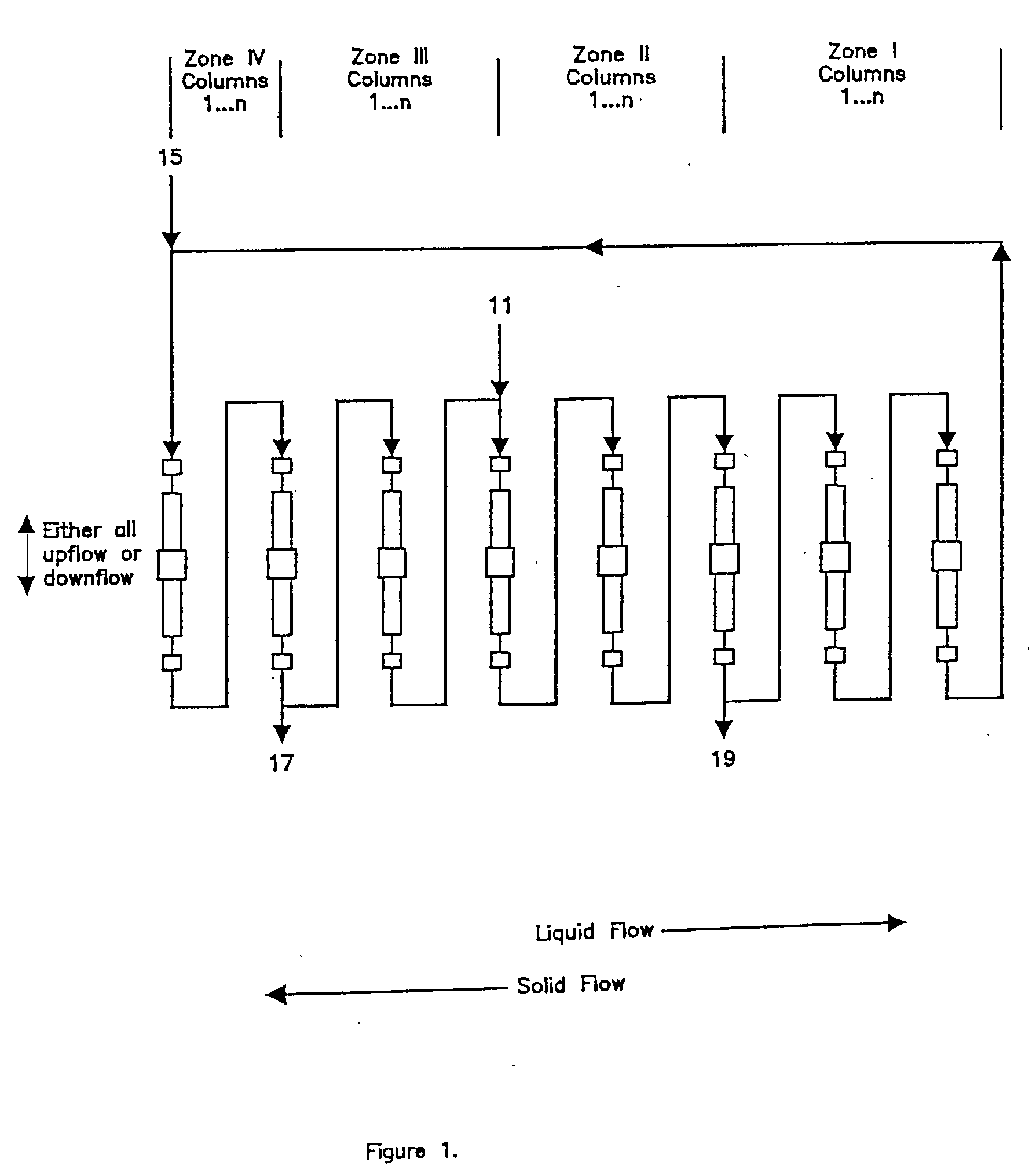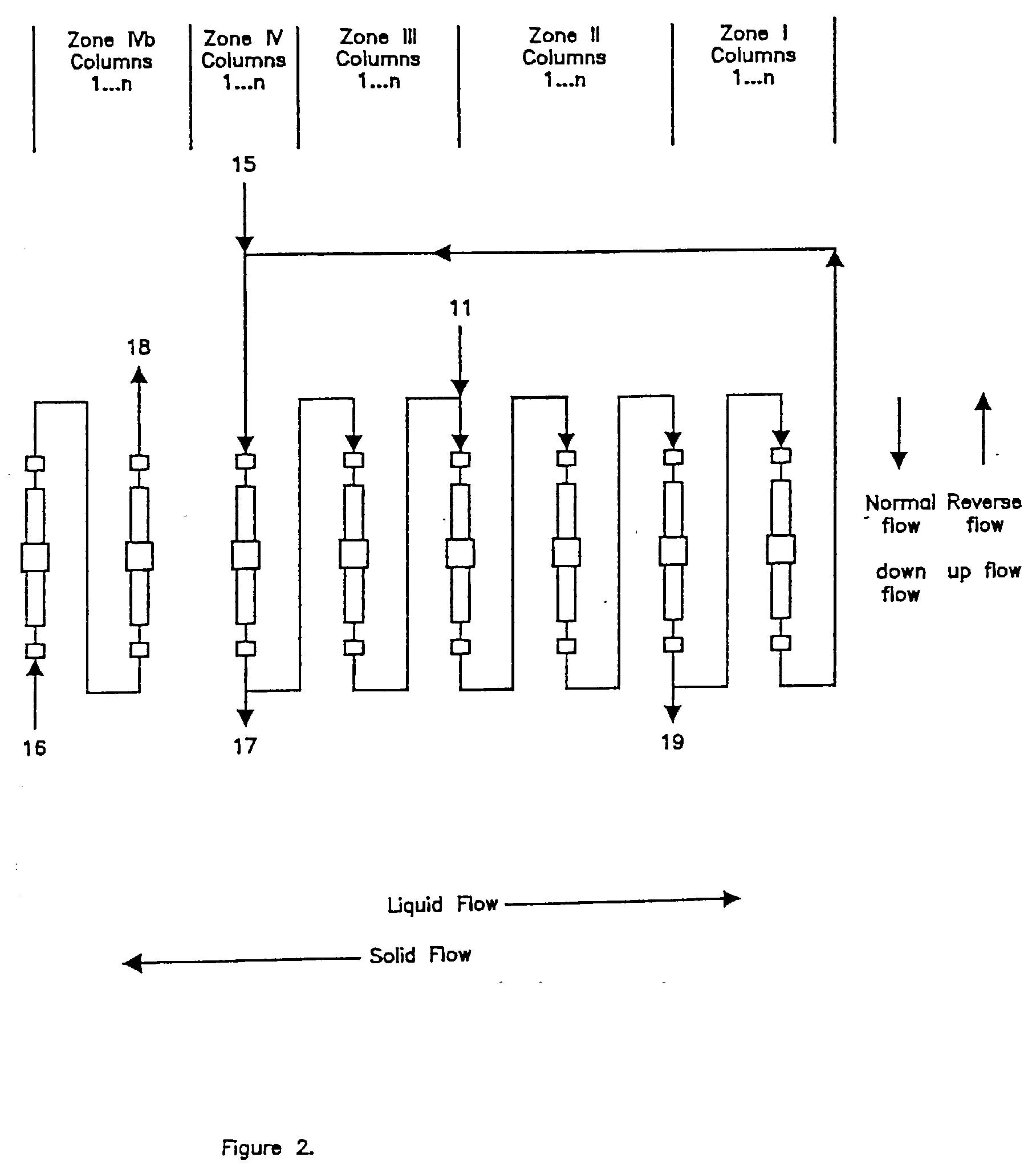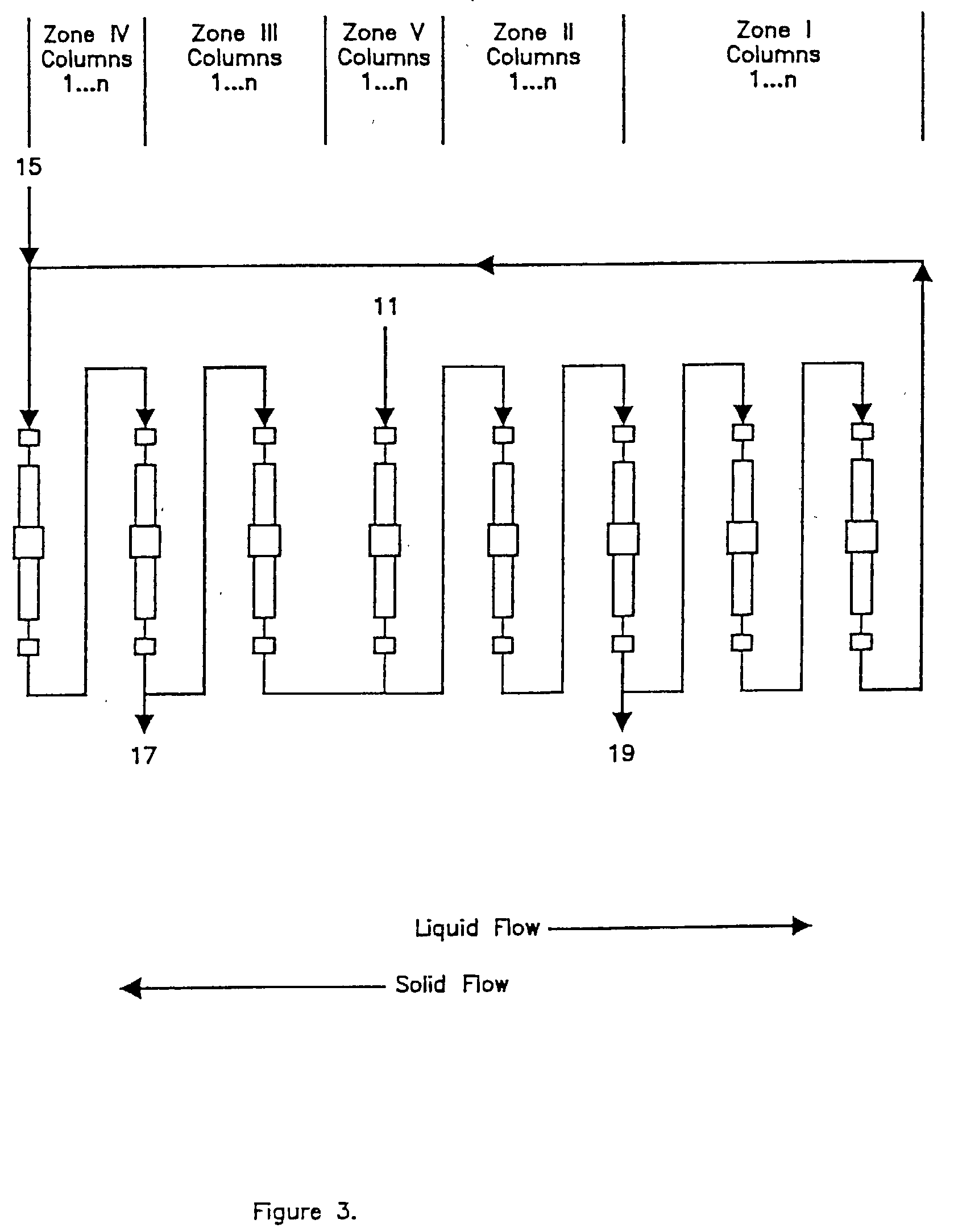High performance continuous reaction/separation process using a continuous liquid-solid contactor
a liquid-solid contactor, high-performance technology, applied in separation processes, ion-exchangers, organic chemistry, etc., can solve the problems of high cost, high temperature sensitivity and azeotrope formation, and prevent the system from handling many reaction/separation applications, etc., to improve product quality, reduce cost, and increase productivity
- Summary
- Abstract
- Description
- Claims
- Application Information
AI Technical Summary
Benefits of technology
Problems solved by technology
Method used
Image
Examples
example 2
Parallel Flow Configuration
[0032] In another embodiment of the present invention, multiple columns are connected together in parallel flow mode. As shown for example in FIG. 3, the feed 11 column is connected in parallel. The components of the process system can, either alone or alternatively in combination, employ parallel flow, including the feed, eluent, raffinate, or extract streams. This offers the ability to obtain high flow rates while maintaining an acceptable pressure drop and reaction performance for the process. These capabilities prove especially useful for reactions that require long hold-up time and high mass flow. Such reactions can encounter high pressure drops when performed using the prior art configuration where the columns are connected in a series configuration. The pressure drop requirement for a given process is a very important design parameter. As the pressure drop requirement increases, the cost of the equipment increases and at some point the process becom...
example 3
2-in-1 Configuration (Type A)
[0033] In another embodiment of the present invention, one or multiple columns are connected together separately inside of a separation train, as shown for example in FIG. 4. This combination unit configuration is also referred to herein as a "2-in-1 flow configuration." The 2-in-1 flow configuration optimizes the reaction and separation operations by allowing each to be carried out under different conditions. In addition to reaction / separation, another reaction may be conducted, i.e., reaction / separation / reaction or 3-in-1. This configuration is not limited to 2-in-1 or 3-in-1, but may be used to perform multiple reactions and separations in N-in-1 configuration, where N is an integer greater than 1. The feed 11 column is not connected directly in series with the column that precedes it, but rather is connected independently into the liquid flow of the system. Thus, the user can vary the hold-up time, the composition, and the temperature for the reactio...
example 4
2-in-1 Configuration (Type B)
[0038] In another embodiment of the present invention, one or multiple columns are connected together in a zone that is still within the same unit but outside the separation process zone. The 2-in-1 flow configuration (type A) shown in Example 3 incorporates a reaction zone into the middle of a traditional SMB process. The composition of the material in the reaction zone is influenced by the composition of the adjacent column which will move into the reaction zone position. With the 2-in-1 flow configuration (type B), the reaction zone V receives the next column from elution in zone I. Because of this process feature, the reaction zone is a clean column rather than a column that already contains a certain composition of material. This allows for additional process optimization that goes beyond the 2-in-1 (type A) configuration. This type of process is also outside the traditional SMB process which relies on columns that are endlessly connected in series....
PUM
| Property | Measurement | Unit |
|---|---|---|
| period of time | aaaaa | aaaaa |
| temperature sensitivity | aaaaa | aaaaa |
| purity | aaaaa | aaaaa |
Abstract
Description
Claims
Application Information
 Login to View More
Login to View More - R&D
- Intellectual Property
- Life Sciences
- Materials
- Tech Scout
- Unparalleled Data Quality
- Higher Quality Content
- 60% Fewer Hallucinations
Browse by: Latest US Patents, China's latest patents, Technical Efficacy Thesaurus, Application Domain, Technology Topic, Popular Technical Reports.
© 2025 PatSnap. All rights reserved.Legal|Privacy policy|Modern Slavery Act Transparency Statement|Sitemap|About US| Contact US: help@patsnap.com



